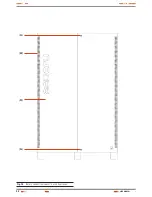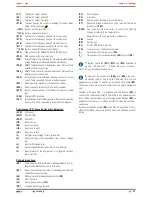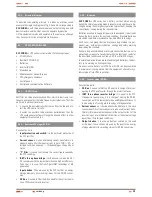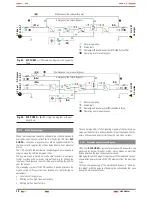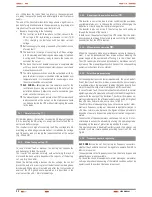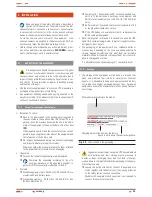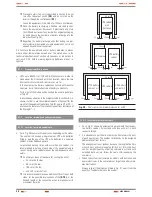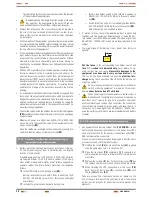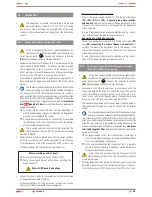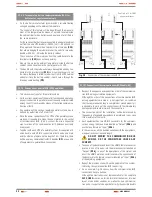
36
Proceed to start it up as it is described in section 6, do not
turn «On» the output switch
(Q2)
, and do not start up the
inverter through the control panel
(PC)
.
Leave the equipment in this mode for 12 hours as minimum.
Once the battery recharging is finished, proceed to shut-
down the equipment, disconnect it electrically and store
the UPS and batteries if any, inside their original packaging,
by writing down the new data of battery recharge into the
label box (see Fig. 29).
Regarding the battery recharge, units that belong to a par-
allel system will be treated as single equipments, so it is not
needed any additional connection.
Do not store the equipments and/or battery modules, in places
where either temperatures exceed over the stated ones in the
technical specifications of section «9. Annexes» or indications in
section «2.2.3.3. Safety warning regarding batteries» are not re-
spected.
5.1.3. Transport until its location.
• UPSs up to 60 kVA (LV) / 120 kVA (HV) have casters, in order to
make easier their transport until their location, where the two
front casters are swivel and the rear ones are fix.
In the same way the battery cabinet has casters with identical
structure, but in the smallest size of battery cabinet only.
For the rest of the models will be needed the use of a pallet jack
or fork lift.
In any case pay attention to the weights stated in section
«
9. An-
nexes», in order to use the suitable mediums of transport for the
weight of the equipment (pallet jack, fork lift, service lift or lift,... ),
as well as the features of the location (type of floor, resistance of
the floor kg/m
2
,.. ).
5.1.4. Location, immobilised and considerations.
5.1.4.1. Location for single equipments.
• As i.e. Fig. 30 shows two typical cases depending on the model.
The one that is based on a single cabinet, UPS with batteries
fitted in, and the one of the UPS with batteries in a separate
cabinet or extended back up time.
For extended back up times with more than one cabinet, it is
recommended to put one at each side of the equipment and in
case of having more cabinets repeat the same sequence alter-
nately.
As minimum, leave a free space for cooling the unit of:
–
25 cm at both sides.
–
50 cm at the rear.
–
100 cm at the top.
–
and 150 cm at the front.
It is recommended to leave an additional 75 cm free at both
sides, for the possible interventions of the
(S.T.S.)
, or the
needed length of the connection wires to make easier its
movement towards.
150 cm.
50 cm.
25 cm.
25 cm.
UPS cabinet
with
batteries
150 cm.
50 cm.
25 cm.
25 cm.
25 cm.
UPS cabinet
UPS battery
cabinet
150 cm.
50 cm.
25 cm.
25 cm.
25 cm.
UPS cabinet
UPS battery
cabinet nr 2
25 cm.
UPS battery
cabinet nr 1
Fig. 30.
Floor view with minimum distances for a UPS.
5.1.4.2. Location for parallel systems.
• As i.e. Fig. 31 shows 4 equipments in parallel with their respec-
tive battery cabinet. For systems with less units act in each
case accordingly.
• It is advisable to put them in order by the Nr stated in the door
of each equipment. The number corresponds to the assigned
address preset from factory.
The arrangement is not random, because the length of battery
wires (3,5 m.) and communication BUS (5 m.), this is the best
one. For a higher quantity of battery cabinets in systems with
extended back up time, follow the same criteria keeping the
symmetry.
• When the system is structured by models with batteries and
power electronics in the same cabinet, forget the battery mod-
ules illustrations.
Always respect the distances stated in Fig. 31, a part from the
quantity of cabinets that sets the system.
USER MANUAL



